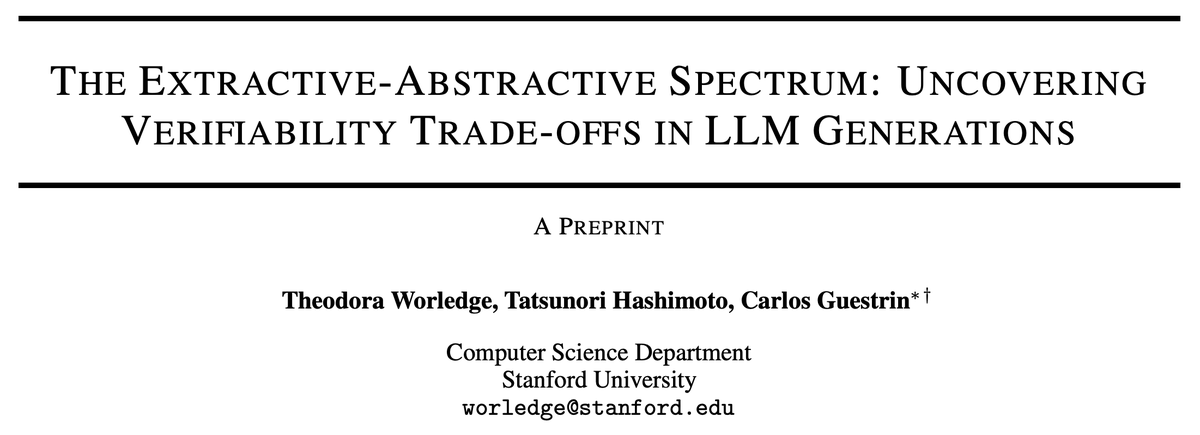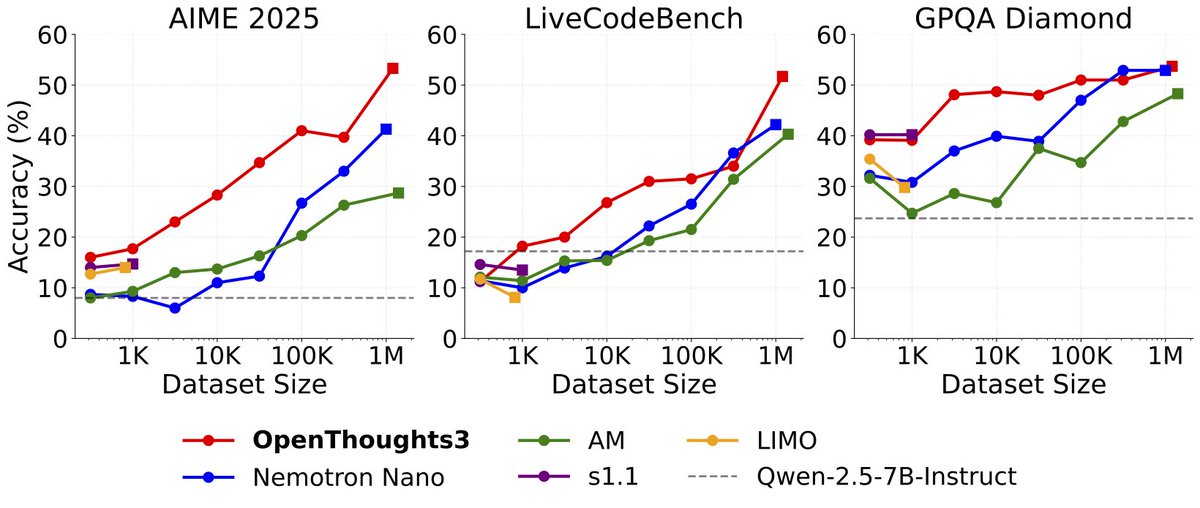
Neil Band
@neilbband
PhD student @StanfordAILab @StanfordNLP @Stanford advised by Tatsunori Hashimoto and Tengyu Ma.
Prev: @OATML_Oxford @CompSciOxford
ID: 1311274045581791234
http://nband.github.io 30-09-2020 11:58:11
139 Tweet
698 Followers
535 Following



Really enjoyed working on Synthetic Continued Pretraining with Zitong Yang*, Shuangping Li, Emmanuel Candes, and Tatsunori Hashimoto! A simple approach to continue pretraining (CPT) on as little as ~1M tokens: Small specialized corpus -> synthesize a large, diverse corpus -> CPT













Want to learn the engineering details of building state-of-the-art Large Language Models (LLMs)? Not finding much info in OpenAI’s non-technical reports? Percy Liang and Tatsunori Hashimoto are here to help with CS336: Language Modeling from Scratch, now rolling out to YouTube.

I think CS336 has one of the best LLM problem sets of any AI/LM class thanks to our incredible TAs (Nelson Liu,Gabriel Poesia,Marcel Rød,Neil Band,Rohith Kuditipudi). We're making it so you can do it all at home, and it's one of the best ways to learn LLMs deeply.


Designed some graphics for Stanford CS336 (Language Modeling from Scratch) by Percy Liang Tatsunori Hashimoto Marcel Rød Neil Band Rohith Kuditipudi Covering four assignments 📚 that teach you how to 🧑🍳 cook an LLM from scratch: - Build and Train a Tokenizer 🔤 - Write Triton kernels for




![Tanishq Kumar (@tanishqkumar07) on Twitter photo [1/7] New paper alert! Heard about the BitNet hype or that Llama-3 is harder to quantize? Our new work studies both! We formulate scaling laws for precision, across both pre and post-training arxiv.org/pdf/2411.04330. TLDR;
- Models become harder to post-train quantize as they [1/7] New paper alert! Heard about the BitNet hype or that Llama-3 is harder to quantize? Our new work studies both! We formulate scaling laws for precision, across both pre and post-training arxiv.org/pdf/2411.04330. TLDR;
- Models become harder to post-train quantize as they](https://pbs.twimg.com/media/GcH1RBoWwAAQp1q.jpg)
![Nicole Meister (@nicole__meister) on Twitter photo Prior work has used LLMs to simulate survey responses, yet their ability to match the distribution of views remains uncertain.
Our new paper [arxiv.org/pdf/2411.05403] introduces a benchmark to evaluate how distributionally aligned LLMs are with human opinions.
🧵 Prior work has used LLMs to simulate survey responses, yet their ability to match the distribution of views remains uncertain.
Our new paper [arxiv.org/pdf/2411.05403] introduces a benchmark to evaluate how distributionally aligned LLMs are with human opinions.
🧵](https://pbs.twimg.com/media/GcNrru3bMAAic66.jpg)







